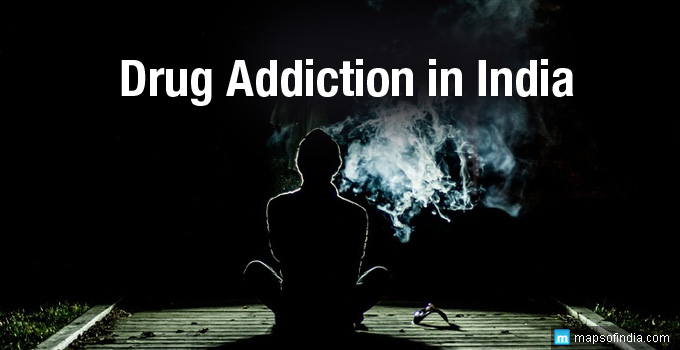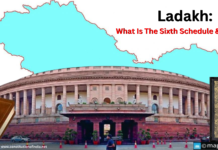Over the last few decades, drug consumption has become one of the biggest problems affecting millions of children and youth in the country. There are few states and cities in India which have taken the lead in drug consumption. Punjab in the Northern part of India has been facing a drug epidemic since a very long time, though it is considered to be one of the most developed states of the country. Even our national capital is not lagging behind. States like Mizoram, Manipur, Goa and Mumbai are other prominent states affected by the drug problems. The government of India recently has given the nod to conduct nation-wide survey to assess drug abuse.
Drug Problem: The Government’s Survey in Punjab
In 2015, a study was commissioned by the Ministry of Social Justice and Empowerment (MoSJE), Government of India, to find out the numbers of opioid/drugs dependent individuals in Punjab. The survey was conducted by the Society for Promotion of Youth & Masses (SPYM) and a team of researchers from the National Drug Dependence Treatment Centre (NDDTC), AIIMS, New Delhi, in association with the Department of Health and Family Welfare, Government of Punjab.
Ten districts were covered in the study: Bathinda, Ferozepur, Jalandhar, Kapurthala, Gurdaspur, Hoshiarpur, Patiala, Sangria, Moga, and Tarn Taran.
Some interesting facts reveled in the survey are as follows:
- The total number of drug users in Punjab 2,32,856.
- 89% of drug addicts are educated and literate.
- 83% of drug addicts in Punjab have jobs.
- Almost all drug addicts in Punjab are male (99%).
- Half of Punjab’s drug addicts are from villages (56%).
- The most common drug consumed is Heroin (chitta). 53% of drug addicts surveyed claimed this.
- On an average, Rs. 1400 is spent on heroin by drug addicts every day in Punjab. Opium users spend Rs. 340 per day and pharmaceutical opioid users spent Rs. 265 per day.
Factors that caused drug problem in the state
- A farming crisis caused by an over-reliance on cash crops
- Lack of job opportunities
- Easy availability of narcotic substances
- Ties between drug associations, organized criminal gangs, politicians and crook elements of the law enforcement agencies
Government efforts to tackle drug problem in the state
Chief Minister Captain Amrinder Singh decided to take a strong action against the drug problem in the state following the elections. His primary areas of focus are:
- To target the drug network in the ste to reduce the drug supply
- Introducing “Outpatient Opioid Assisted Treatment” in order to improve thye current conditions of the de-addiction centres
- Building mass awareness on drug abuse to reduce demand for drugs.
Drug Problem: The Government’s Survey in Delhi
In a recent survey by the Government on drug problem in the national capital, it was found that children as young as 9-years-old are known to have been affected by drug abuse. This was the first time a major government survey was undertaken on Delhi’s street children. The survey was conducted by Delhi government’s women and child development department in association with NDDTC at AIIMS.
Some interesting facts reveled in the survey are as follows:
- Around 70,000 street children are in the habit of consuming drugs in any form.
- 20,000 consume tobacco.
- Around 10,000 children are into alcohol consumption.
- 7000 children are consuming inhalants.
- 5600 children are in the habit of taking cannabis.
- Around 800 are addictive to heroin.
- There are few who are addictive to pharmaceutical opioids and sedatives.
The strange fact revealed in the survey was that children in the age group of 9 and 10 years have already started consuming tobacco, alcohol while heroin or opium addictions started at the young age of 12-13 years.
Some major causes
In the survey, street children revealed that they took to drugs due to various reasons. Some said that it was peer pressure. Some said that they were curious to experience the after-effects of drugs, while few said they had to resort to drugs to avoid hunger, cold and poverty. More than 60% of these kids were living with their families or relatives. About 15-20% of them lived on the streets to support their families. Just a handful of them (about 10%) were school going children. Some of the children surveyed were school-dropouts due to drug abuse.
To sum up
It is very astonishing to find how widespread the problem is. The situation is grave not only in Punjab and Delhi but also in many parts of India. The Delhi government is now planning to start dedicated juvenile drug de-addiction centers in six hospitals. In the Punjab survey, it was revealed that more than 80% have tried to give up drugs but only about 30% of them have actually received help or treatment. Experts are of opinion that health and welfare programs do not reach the millions of people affected by drugs.
Explore More……
Drug Abuse: Causes and Solutions
Generic Drugs in India: More Awareness Required
344 Fixed Drug Combinations Banned by Health Ministry
Changes Needed in National List of Essential Medicines
Please note: This article has been written by Rumani Saikia Phukan on Jun 19, 2017. The information contained in this article has been recently updated.




